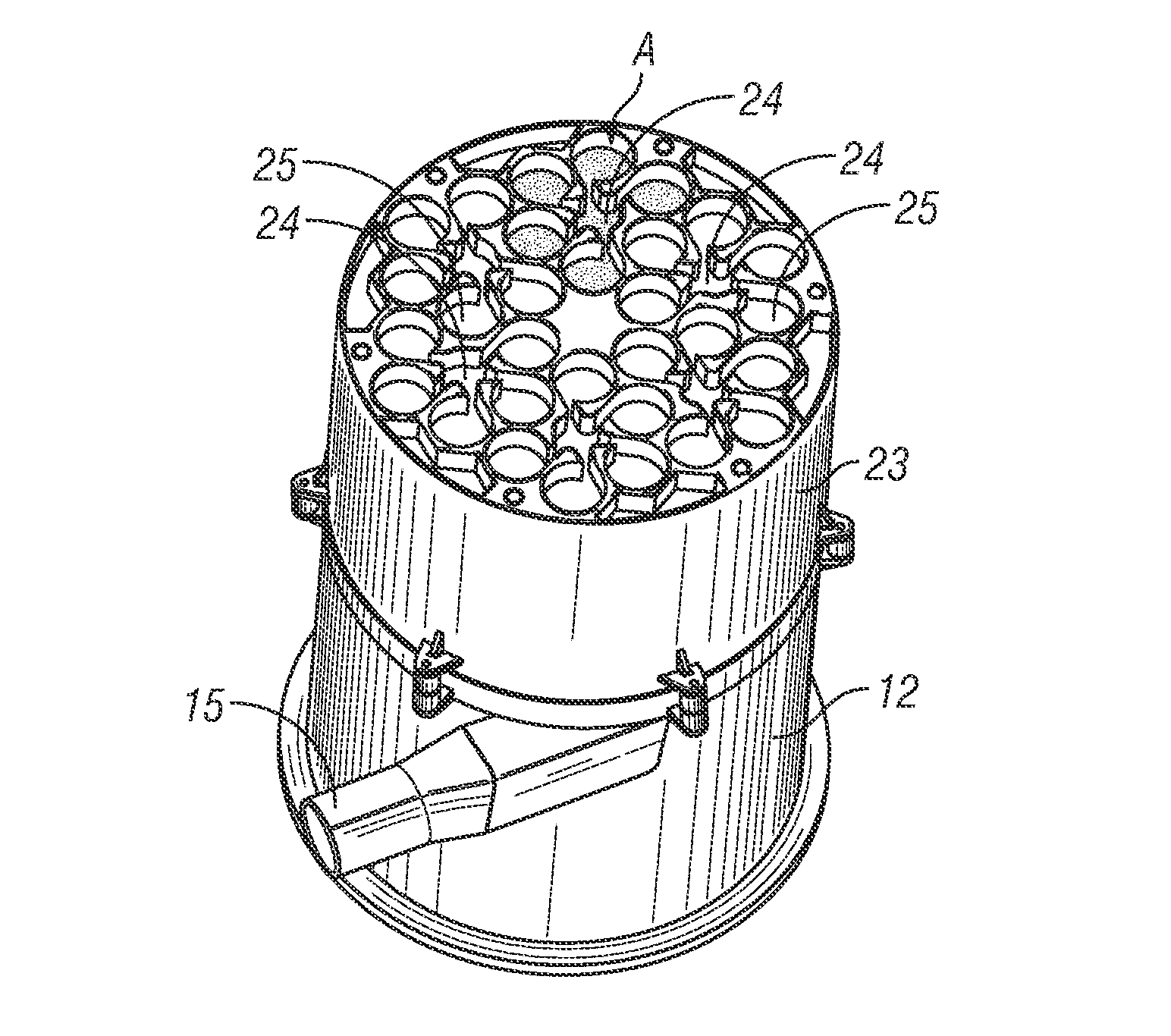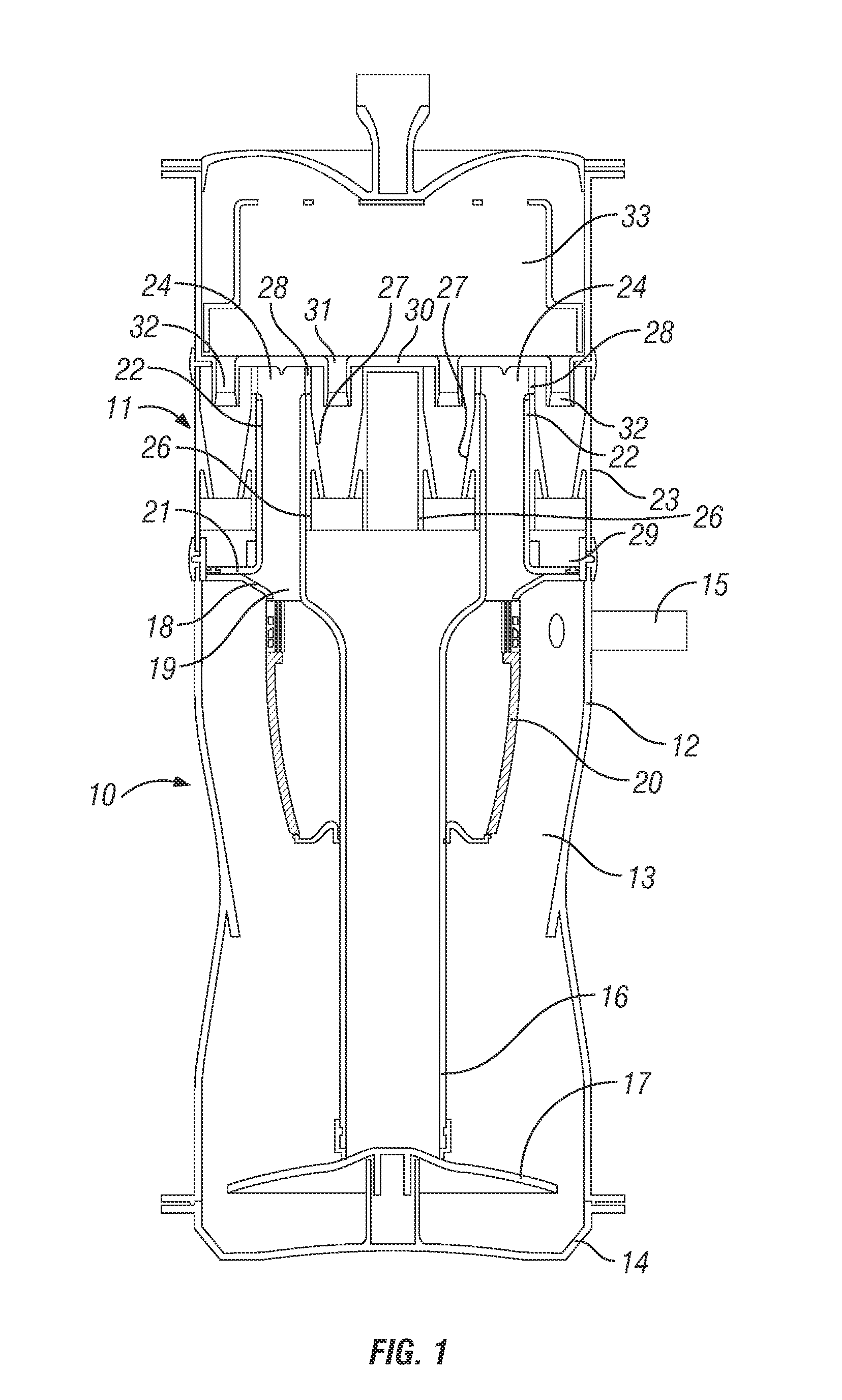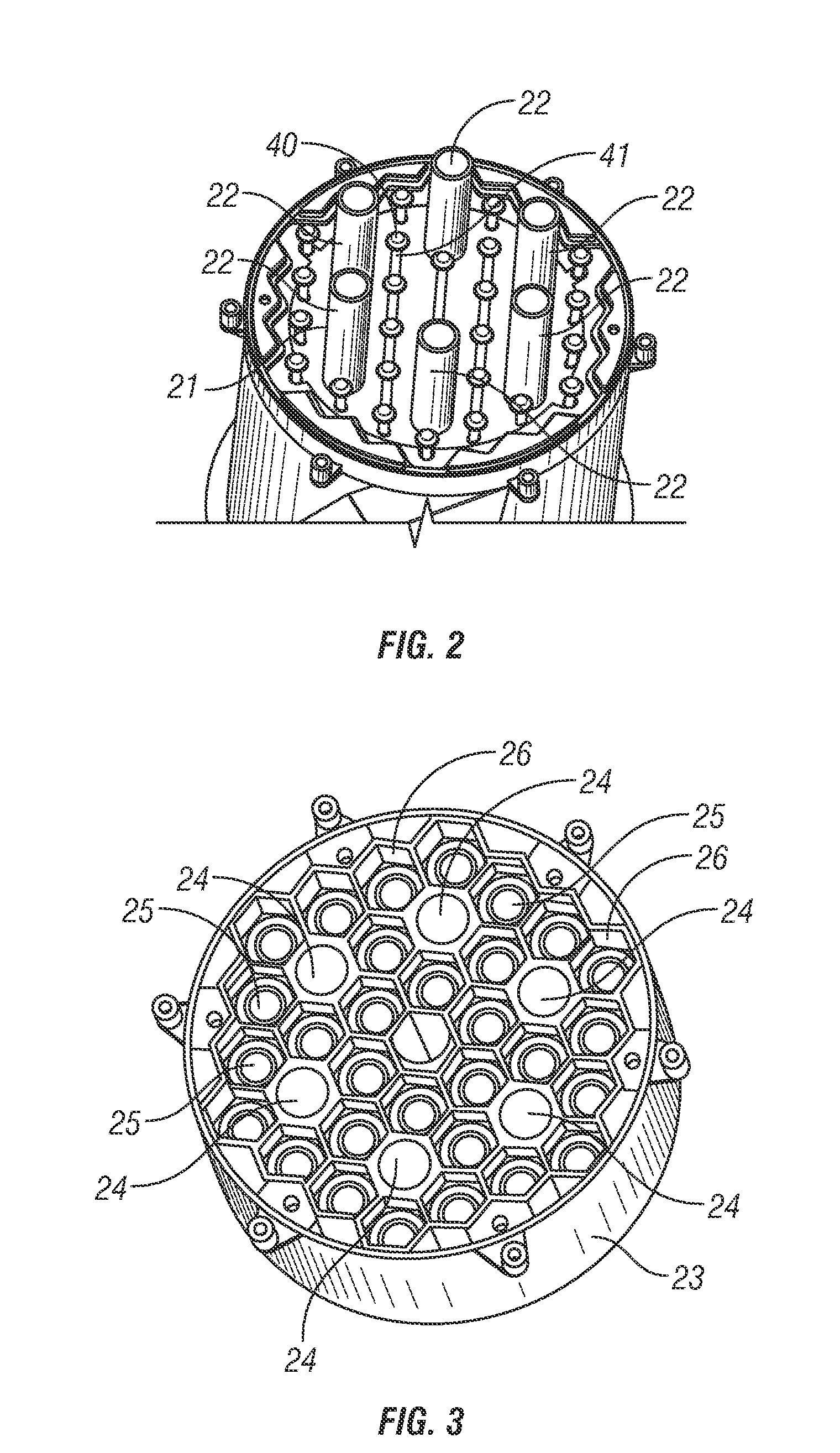Cyclonic separation apparatus
a technology of cyclonic separation and cyclone separator, which is applied in the field of cyclonic separation apparatus, can solve the problems of reducing separation efficiency, small size, and easy blockage, and achieves the effect of maximising maximizing the density of cyclone separator, and large cyclonic separator
- Summary
- Abstract
- Description
- Claims
- Application Information
AI Technical Summary
Benefits of technology
Problems solved by technology
Method used
Image
Examples
Embodiment Construction
[0035]Referring to FIG. 1 of the drawings, there is shown the separation portion of an upright vacuum cleaner. The separation portion is mounted to a chassis (not shown) incorporating a handle, the lower end of the chassis being pivotally interconnected to a wheeled floor-cleaning head incorporating a rotatable agitator brush.
[0036]The separation portion comprises a generally cylindrical upright housing, which houses the first and second separation stages 10, 11 at its lower and upper ends respectively, the second stage 11 being fluidly connected downstream of the first stage 10.
[0037]The first stage 10 comprises a tubular side wall 12 defining a circular-section cyclone chamber 13. The lower end of the tubular side wall 12 is provided with a closure 14, which can be opened to allow separated dirt and dust to be emptied from the chamber 13.
[0038]An inlet duct 15 for carrying dirt and dust laden air from the floor cleaning head extends tangentially into the upper end of the tubular s...
PUM
| Property | Measurement | Unit |
|---|---|---|
| diameter | aaaaa | aaaaa |
| diameter | aaaaa | aaaaa |
| radial distance | aaaaa | aaaaa |
Abstract
Description
Claims
Application Information
 Login to View More
Login to View More - R&D
- Intellectual Property
- Life Sciences
- Materials
- Tech Scout
- Unparalleled Data Quality
- Higher Quality Content
- 60% Fewer Hallucinations
Browse by: Latest US Patents, China's latest patents, Technical Efficacy Thesaurus, Application Domain, Technology Topic, Popular Technical Reports.
© 2025 PatSnap. All rights reserved.Legal|Privacy policy|Modern Slavery Act Transparency Statement|Sitemap|About US| Contact US: help@patsnap.com



